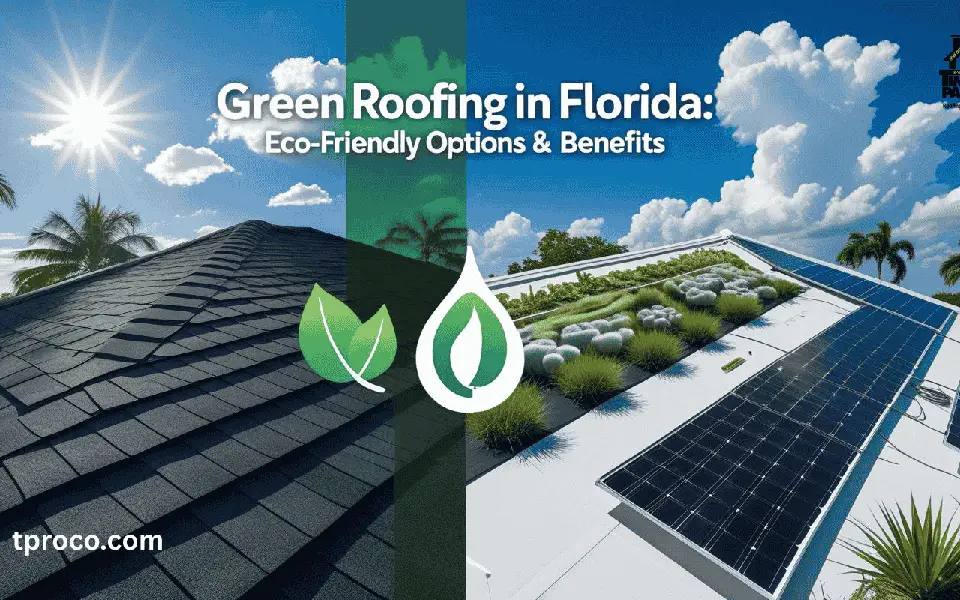Our Blogs
Florida Vacation Home Roof Maintenance: Seasonal Tips & Off-Season Prep 🌴
Owning a Florida vacation home means sunshine, beach weekends, and winter escapes. But it also means part-time occupancy, leaving your roof unsupervised for extended stretches. In a state where storms can blow in with little notice—and humidity fosters mold or algae—lack of routine care leads to sneaky leaks and big repair bills. The good news? A practical maintenance checklist ensures your roof stays in top shape, even when you’re hundreds or thousands of miles away. From seasonal inspections and hurricane prep to remote monitoring tips, this blog walks you through proven ways to keep your property’s roof safe, dry, and guest-ready year-round.

1. Schedule Regular On-Site Inspections
If you’re not around often, it’s easy to overlook minor roof issues:
- Annual or Biannual Checks: Hire a local roofer or property manager for a thorough inspection—ideally once before hurricane season (spring) and once after it (fall). They’ll spot loose shingles, tile cracks, or flashing gaps.
- Post-Storm Evaluations: If a named storm or hurricane passes near your area, arrange a roof check ASAP. Even if you’re away, a quick local inspection can catch wind damage early.
- Documentation: Request photos or videos of the roof, including close-ups. Keep these in a digital file to compare year over year and catch subtle wear.
A “set it and forget it” approach can quickly become “out of sight, out of mind.” Meanwhile, Florida’s frequent storms and intense sun degrade roofing materials. By contracting a reliable local pro for routine visits, you’ll stay on top of small leaks or algae patches before they balloon into major hassles—no matter how far away you spend most of your time.
2. Off-Season Prep: Gutter & Debris Clearing
Before locking up your Florida getaway:
- Clean Gutters Thoroughly: Leaves and twigs can clog downspouts, causing water to overflow onto the fascia or under shingles. In Florida’s climate, “off-season” still sees rain that can exploit blocked gutters. Hiring a handyman or cleaning service ensures they’re clear.
- Trim Overhanging Branches: Limbs that shade the roof or drop debris can lead to algae or moss. Trimming back 6–10 feet from the roof perimeter reduces buildup.
- Check Valleys & Roof Edges: These areas gather leaves or pine needles. Removing them helps water flow freely, preventing moisture from stagnating where algae or mold flourish.
- Cover or Secure Outdoor Items: If strong winds approach while you’re away, unsecured patio furniture or branches can crash onto the roof. Stow them or anchor them.
Clearing out potential water traps is a simple yet powerful safeguard. Even if your roof is in good shape, clogged gutters or a pile of leaves in a valley can degrade shingles or tile mortar over months of inactivity. Also, fewer obstructions mean fewer hiding places for rodents or birds seeking nests in your eaves. A little off-season cleanup yields big dividends when you return to find your roof intact and free of hidden moisture issues.
3. Hurricane Season Preparations
Florida’s hurricane season spans June to November, often the exact time your vacation home might be vacant:
Reinforce or Repair Weak Spots:
If your inspector flagged any missing fasteners, lifted shingles, or compromised tiles, handle them before storm season. Even minor vulnerabilities can escalate under 100+ mph winds.
Install or Check Storm Shutters:
If your roof experiences blow-off, water can enter windows if they’re unprotected. This might exacerbate interior damage and mold growth. Secure your entire building envelope.
Roof Tie-Downs or Straps:
Older homes might lack modern hurricane strapping. A retrofit in the attic (adding metal clips/wraps) can keep your roof from lifting off in severe gusts.
Document & Insure:
Keep updated photos of your roof’s current condition, plus receipts for any reinforcing done. Having proof of its status pre-storm speeds insurance claims if something goes wrong.
Ask neighbors or property managers to check your place if a storm’s on track for your region. They can confirm everything is secure or add extra tarps if something shifts. The key is addressing small repairs pre-emptively so hurricane-force winds don’t exploit those weaknesses while you’re away.
4. Remote Monitoring & Tech Solutions
Today’s technology helps keep tabs on your roof from afar:
- Roof Sensors or Leak Detectors: Some systems send alerts if moisture levels spike under the shingles, letting you arrange local repairs quickly.
- Drone Flyovers: A local contractor or tech-savvy neighbor can do a quick drone inspection for hail hits, missing shingles, or pooling water. Live video or photos can be sent to you.
- Security Cameras: While typically aimed at doors or driveways, a camera angled to capture part of the roof may show debris buildup or storm impacts.
If you only visit your Florida home a few times a year, these remote solutions provide peace of mind. Quick detection of roof trouble—like a sagging area or fresh leak—means you can fix it before mold or structural harm sets in. Combining tech with periodic professional inspections yields a robust watchful eye on your property year-round.
5. Selecting Roof Materials & Coatings for Vacation Homes
If you’re upgrading or replacing your roof, choose materials that handle Florida’s extremes with minimal fuss:
- Architectural Shingles: Rated for higher winds (up to 130 mph). Some lines include algae-resistant granules, reducing maintenance if you’re away.
- Metal Roofing: Excellent durability and wind resistance. Painted coatings reflect sunlight, cutting cooling costs. Slightly higher upfront cost but fewer repairs.
- Clay or Concrete Tile: Provides a classic Florida aesthetic, but tile can crack if storms fling debris or if walked on improperly. Ensure you have a plan for quick repairs if you’re often absent.
- Reflective Coatings or Membranes: For low-slope or flat vacation homes, a reflective TPO or silicone coating lowers attic temps and fights mold growth on surfaces.
Opt for a system with robust warranties and proven hurricane performance. If algae or moss is a recurring nuisance, consider algae-resistant shingles or tile sealants. The goal is a roof that “babysits itself” as much as possible while you’re away. Less frequent cleanings, better wind-lift rating, and built-in mold prevention mean fewer urgent calls to contractors from out of state.
6. Engage Trusted Local Help
Finally, if you’re not around:
- Hire a Reliable Property Manager: They can do quick roof checks after storms or add a tarp if a branch falls through. Prompt action can save thousands in water damage.
- Build a Roofer Relationship: Having a local contractor you trust means faster response times, plus they’ll know your roof’s history and materials.
- Schedule Maintenance Appointments in Advance: Book a gutter cleaning or inspection for soon after the rainy season. If you plan a winter visit, coordinate a roof tune-up.
Florida’s weather can be unpredictable, so a support system on the ground is invaluable. They can coordinate with your insurer if storm damage occurs, collect pictures, and ensure repairs are done properly. This network ensures your part-time home receives the same roof care a year-round resident would give, guarding it from neglected leaks or overgrown algae while you’re away enjoying your property stress-free whenever you visit.
Conclusion
🌴 Maintaining a Florida vacation home’s roof is challenging when you’re not onsite, but it’s entirely doable with a structured plan. From biannual inspections to gutter cleanouts and hurricane-season prep, these strategies keep your roof resilient despite storms, humidity, and sun exposure. Incorporate remote monitoring for peace of mind, and consider wind-rated or algae-resistant materials if you’re upgrading. Most importantly, have local support—be it a property manager or a trusted roofer—who can address issues swiftly when you’re away. By taking these proactive steps, you safeguard your part-time paradise from unwanted surprises like leaks, rot, or mold, ensuring a worry-free Florida getaway.
Frequently Asked Questions (FAQ)
🌴 Own a Florida Vacation Home? Don’t Let the Roof Suffer While You’re Away!
Debris, algae, and storm damage can sneak in fast when your roof’s left alone. Use our seasonal checklist to protect your vacation home year-round—whether you’re in-state or out.
#tproco #tppro #tprci #urro #rrfl
#VacationHomeRoof #SeasonalMaintenance #FloridaGetaway #TampaSnowbirds #OrlandoProperty #SunshineState
Schedule a Free InspectionAbout the Author

Timothy Parks
CEO
📢 Stay Informed: Communication & Consent Updates
At Timothy Parks Roofing & Construction Inc., we prioritize transparency in our communications. By submitting a request, you agree to receive calls, texts, and emails regarding our services. Standard messaging rates may apply. You can opt-out at any time by replying STOP or contacting us directly.
✅ Florida License: #CBCO59592, #CCC1327217, #HI4878
📌 Privacy & Terms: Read our Privacy Policy and Terms of Service.



